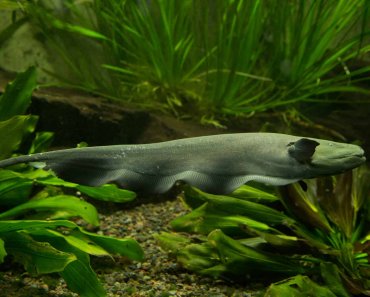Living aquatic plants not only look beautiful in your display tank, but they provide several essential functions. Plants use carbon dioxide and give off oxygen, helping to oxygenate the tank water for your fish. Also, plants use the nitrates in the water as fertilizer, helping to keep the aquarium environment healthier for your fishes. Lush plant leaves also provide shelter for shy fish species and fry.
There are so many different varieties of aquatic plants to choose from that it can be somewhat bewildering for a beginner to decide what to go for.
In this guide, we take a look at the anacharis plant, a popular aquarium staple that’s loved by many hobbyists. Anacharis is an ideal plant for beginners, as it’s easy and undemanding to care for, and you can also propagate it in your home tank.
What is anacharis?
Anacharis is known by quite a few names, including:
- Brazilian Elodea
- Brazilian Waterweed
- Egeria densa
The plant’s current scientific name is Elodea densa, but its old name of anacharis has stuck. This aquarium plant belongs to the order of plants called Alismatales and is one of the Hydrocharitaceae family.
Elodea plant origins
Anacharis comes from Argentina, Uruguay, and Southeast Brazil, and the plant grows prolifically right across North and South America, as well as in other parts of the world.
Anacharis plants are perennial in nature, growing in ponds and slow-moving water such as canals, rivers, and streams. In nature, the plant rises and falls according to the temperature. When the weather is warm, the plant floats up to the surface to absorb the sun, sinking down into the water again at night.
The plant grows in fairly deep water up to around 14 feet and can survive in a range of water conditions, which makes anacharis a very good option for beginners.
Elodea plants appearance
Elodea is an extremely attractive plant that has long, green, tubular stems with nodes from which tiny green leaves grow to cover the length of each stem. Each node carries a whorl of three to six leaves, although the middle to upper nodes that are closest to the surface can have whorls of four to six leaves. The plant’s leaves can be oblong or oval-shaped and up to four centimeters in length. At the end of each branch is a cluster of leaves, and the stems put out thin, stringy white roots.
The plant is green, and the exact shades of color vary between specimens from grass green to a darker shade. In summer, anacharis produces a small, three-petalled, pale white flower that floats on the water surface or sits just above it.
Wild anacharis plants and those that are grown in garden ponds can reach around three feet tall, but aquarium plants’ growth can be controlled by careful pruning.

Availability and specimen selection
Anacharis is widely available from most good pet stores, fish shops, and garden pond supplies outlets. Generally, you can buy a bunch of stems for just a few dollars.
When choosing anacharis plants, look for healthy plants that have green stems bearing lots of leaves. The stems should appear strong and robust with no black, brown, or very dark green leaves, especially if the stems are limp, a that usually means that the plant is unhealthy or dying.
Bunches of stems are usually around six to eight inches long. Don’t worry if the stems are not bearing any roots, as they will root readily in the aquarium or pond. Bunches of stems are usually secured with an elastic band. Remove the band very carefully so that you don’t snap or damage the stem.
How many stems do you need?
If you’re purchasing Egeria densa plants for your fish tank, it’s easy to see how many stems you will need. However, if you have a fish pond, It’s relatively straightforward to decide how much you need based on the size of your pond.
- For ponds up to 50 square feet, you need one bunch of anacharis per square foot
- For ponds from 51 to 200 square feet, you need one bunch of anacharis per two to three square feet
- For ponds of 200 square feet plus, you need one bunch of anacharis per three to four square feet
Uses of anacharis in the aquarium
Anacharis is a very useful plant. Not only does it look beautiful when grown in profusion across the back and side glass of the tank, but dense growth can also provide shelter for shy fish species, aquarium shrimp, and for vulnerable fry. Bettas will happily build bubble nests underneath floating stems of anacharis, and other species will lay their eggs in lush clumps of planted specimens.
Anacharis also provides food for some species of fish, including goldfish, cichlids, and apple snails. The plant also uses a lot of nutrients from the water column, starving problem algae. Also, anacharis secretes a substance that can actually help to prevent nuisance blue-green algae.
Finally, the anacharis plant makes a very effective filter, catching floating debris before it sinks into the substrate and begins to decompose.
Planting elodea
Planting anacharis is very straightforward. Carefully remove the elastic band and separate the stems. If you spot any pieces of the stem that are damaged, simply cut those areas away with a pair of sharp scissors.
Remove all the leaves from the lower couple of inches of the stem that will be buried in the substrate, and then sink the plant into the gravel to a depth of between one to two inches. Leave a space of at least one inch between each stem to allow adequate space for the plants to grow. Overcrowding the plants will prevent them from flourishing as there won’t be sufficient nutrients to support them all. Also, if you don’t plant the steps deep enough, they will probably float out of the substrate without taking root.
Anacharis grows tall, so you want to put it along the back wall of the tank or down the sides. You can also use these aquarium plants as floating specimens.
Care of the anacharis plant
The anacharis plant is so easy to care for that you will most likely end up having to curtail its growth rather than stimulate it!
Anacharis grows well both planted in the substrate and when left to float freely in the aquarium. Free-floating plants grow especially well because they are closer to the lights in your tank. That means that your fish can enjoy the benefits of having live plants in their tank, even if you have a low-lighting aquarium setup.
Alternatively, if you have a substrate that’s rich in nutrients, anacharis will grow vigorously too because the plant can take the nutrients it needs from both the substrate and from the water column.
Water parameters
Although anacharis plants can thrive in a fairly wide variety of water conditions, the most vigorous and healthy growth can be achieved if the aquarium water conditions are within certain parameters.
Although you can grow anacharis in cold water tanks and the plants will tolerate temperatures as low as 60o Fahrenheit, these are really semi-tropical plants in nature, preferring temperatures between 72o and 78o Fahrenheit. That said, if you have a very warm aquarium, anacharis plants will tolerate temperatures as high as 82o Fahrenheit.
The ideal water hardness for anacharis is 3 to 8 dKH, and a neutral pH range of 6.5 to 7.5 is preferred by these plants.
Lighting
Anacharis plants can be grown under low lighting if allowed to float free. However, the plants do prefer moderate lighting levels of at least two watts per gallon. If light levels are too low, the plants will die or grow spindly and stringy as the stems try to reach the light.
However, if the lighting is too high or you don’t illuminate the tank for long enough, algae may proliferate and grow over the plants, especially dark green hair algae.
Supplements
Anacharis will grow happily in a coldwater tank without any additional supplementation. However, in a tropical setup, you may need to use weekly doses of CO2 and fertilizer if you plant anacharis in the substrate.

Growth and maintenance
Anahcaris can grow very rapidly if kept in the correct conditions. If you plant anacharis in the substrate, the stems will extend upward toward the lights, spreading out right across the water surface. If allowed to grow unchecked, the stems eventually form a forest of downward arching plants across the surface of the water.
The plant has fine white roots that will grow down into the substrate, although they are pretty delicate and can be easily damaged by foraging fish. The stems also put out roots from elsewhere on the stem, which enables the plant to draw nutrients from the water.
Trimming anacharis
If you don’t want anacharis to take over your aquarium, you will need to trim the stems every so often to keep the plant’s growth in check. All you need to do is choose a few stems to remove and cut then gently, using a pair of aquascaping scissors.
If you have particularly boisterous fish in your tank, they may damage the stems, in which case you should remove them before they die off and pollute the water. Use the same technique, trimming the plant just below the damaged area and snipping cleanly through the stem with sharp scissors.
Propagation
The anacharis plant is extremely easy to propagate. So, you need only buy a few stems at first, growing more as and when you need them. It’s realistic to be able to continue renewing anacharis stems over many years from a few original specimens.
To grow a new plant, simply cut a healthy stem from the main plant. Select a long, healthy stem that has lots of nice green foliage. Take a stem that is at least eight inches in length. Nip the leaves from a bottom couple of inches of the stem and then bury the stem in the substrate to a depth of around two inches. That’s important, as any leaves that get buried in the gravel will die and rot, potentially killing the whole stem.
After a week or so, the stem will put out fine, white roots and begin to grow.
In summary
Keeping live plants is great for the health of your fish, and we think they should be essential in any freshwater aquarium. Anacharis is easy to care for, grows in a wide range of water conditions, is suitable for use in both tropical and cold water tanks, grows rapidly, and is very easy to propagate.
Anacharis is suitable for beginners who are just starting out on their aquarium keeping hobby and for more experienced hobbyists who are looking for cheap plants that are suitable for use in breeder tanks.


























